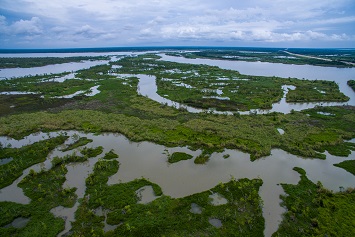Earlier this month, the EPA finalized its “Clean Water Act Section 401 Certification Rule,” which aims to increase the transparency and efficiency of the Clean Water Act (CWA) Section 401 water quality certification process to promote the timely review of infrastructure projects.
Section 401 grants states and tribes the authority to review federal permits and licenses for potential impacts that the resulting discharges may have on water resources and to add requirements as necessary to protect water quality. Not only does Section 401 give states and tribes federal authority, but it also prohibits the issuance of a federal permit or license without state or tribal certification or waiver of certification. This certification process applies primarily to wetlands permits under CWA Section 404, which are issued by the U.S. Army Corps of Engineers (Corps), and to the Federal Energy Regulatory Commission (FERC) licenses for pipeline and hydropower facilities.
The new rule specifies that states and tribes must take final action within 1 year of receiving a certification request and that there is no tolling provision in Section 401. The new rule also provides a more precise explanation for when a state or tribe’s review period begins by defining a “certification request.” In the past, state and tribal agencies have had different criteria for triggering a 401 review, often based on receiving what those agencies considered an “administratively complete” application. Furthermore, the new rule clarifies the scope of Section 401, including clarifying that 401 certification is triggered based on the potential for a project to result in a discharge from a point source into a water of the United States (WOTUS).
Reasons for Rulemaking
The EPA’s rulemaking came pursuant to the direction of the April 2019 Executive Order (EO) 13868, Promoting Energy Infrastructure and Economic Growth. In this EO, President Donald Trump directed the EPA to review Section 401 and the EPA’s related regulations and guidance to determine whether the Agency’s policies should be updated or clarified to promote private investment in the nation’s energy infrastructure through efficient permitting and increased regulatory certainty.
Before this rulemaking, Section 401 became a frequent source of controversy, as states leveraged ambiguities in the provision to block the construction of significant energy infrastructure projects such as oil and gas pipelines and liquid natural gas terminals. As recent examples, the New York State Department of Environmental Conservation (DEC) denied Section 401 certifications for two pipeline projects and delayed in acting on another 401 certification request it deemed incomplete. In denying one of these projects, the DEC relied in part on its findings associated with greenhouse gas (GHG) emissions and New York’s recently enacted Climate Leadership and Community Protection Act.
As EPA Administrator Andrew Wheeler claimed on announcing the final rule, “EPA is returning the Clean Water Act certification process under Section 401 to its original purpose, which is to review potential impacts that discharges from federally permitted projects may have on water resources, not to indefinitely delay or block critically important infrastructure. Today, we are following through on President Trump’s Executive Order to curb abuses of the Clean Water Act that have held our nation’s energy infrastructure projects hostage, and to put in place clear guidelines that finally give these projects a path forward.”
Reaction
As anticipated, reaction to the new rule has been mixed. Energy industry leaders have responded enthusiastically, with Rich Nolan, President and CEO of the National Mining Association (NMA), commenting, “We hope that EPA’s action … will help end the abuse of the section 401 permitting process, which has been used to obstruct projects for reasons that had nothing to do with protecting water quality. Decisions on 401 applications have dragged out for years, putting projects in jeopardy and exacerbating the already woefully inefficient permitting process hampering so many U.S. mining projects.”
Similarly, Dena Wiggins, President and CEO of the Natural Gas Supply Association (NGSA), stated, “NGSA supports these much-needed clarifications, including reaffirming the timelines for review and action, and clarifying the scope of review. EPA’s efforts to promote early engagement and regulatory certainty will enhance the predictability and efficiency of the permitting process for interstate natural gas pipelines and will allow states and federal authorities to do their jobs of protecting water quality.”
However, many environmental groups and some state attorneys general have come out against the revisions, with California Attorney General Xavier Becerra responding, “The Administration’s move today is just the latest assault on the Clean Water Act and our state’s natural resources. We won’t stand idly by as they rip away our authority under the law to preserve water quality.” Jon Devine, director of federal water policy at the Natural Resources Defense Council (NRDC), echoed that sentiment, stating, “Enforcing state and federal laws is essential to protecting critical lakes, streams, and wetlands from harmful pollutants and other threats. But the Trump administration’s rule guts states’ and tribes’ authority to safeguard their waters, allowing it to ram through pipelines and other projects that can decimate vital water resources.”
Impact
Ultimately, the impact of the new Section 401 rule remains to be seen. The rule takes effect 60 days after the date of publication in the Federal Register but will likely face legal challenges from the states and environmental groups who oppose the rule, which will delay its implementation. In the absence of a nationwide challenge resulting in a single ruling on the validity of the new rule, the scope of state and tribal authority under Section 401 may result in individual challenges in multiple courts over time. Consequently, while the rulemaking was intended to provide greater certainty to permit applicants and industry, it is unclear what the reality will look like, even if the rule holds up under the imminent litigation.

